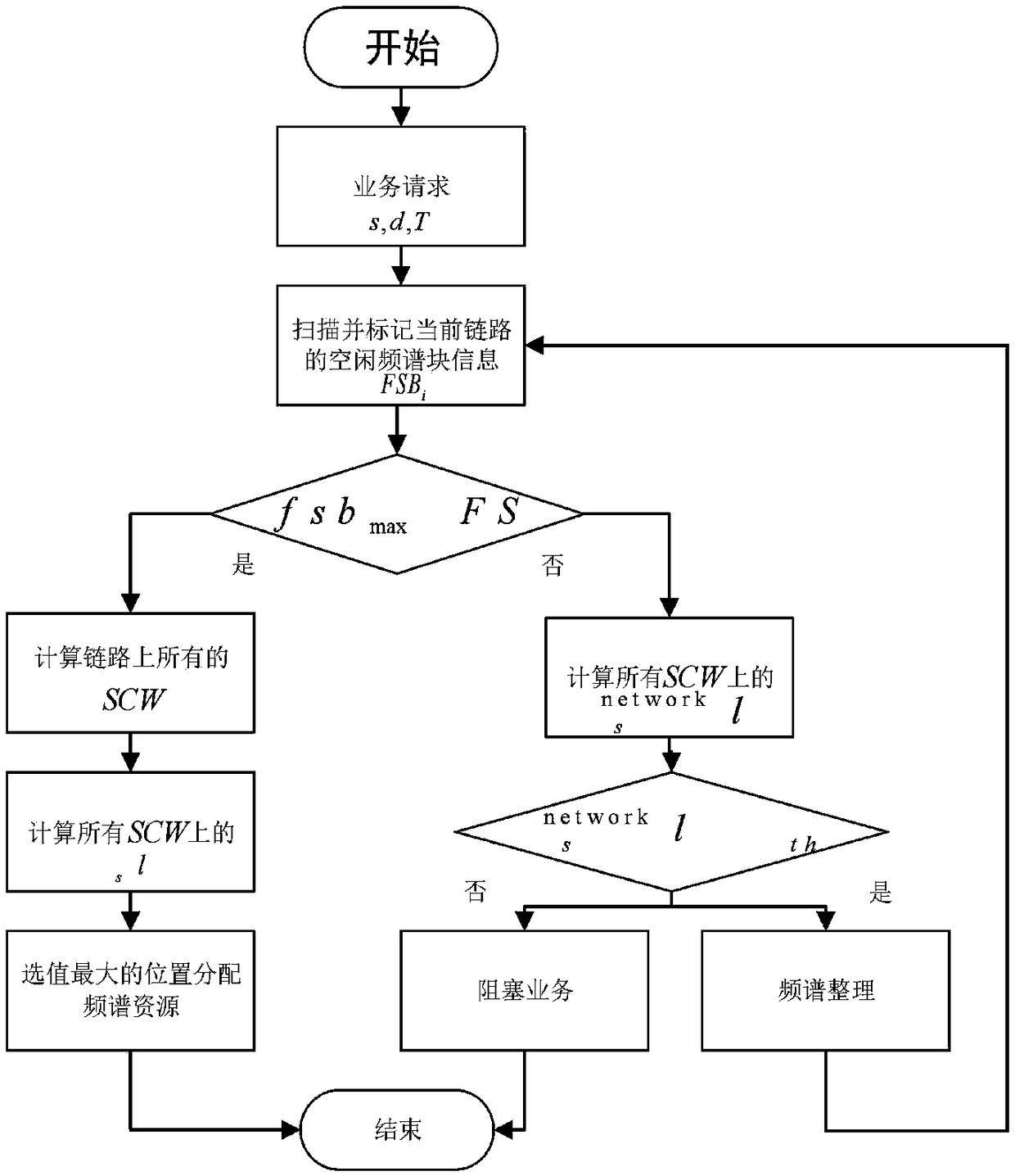Spectrum allocation method based on idle spectrum continuity sensing in elastic optical network
An elastic optical network and idle spectrum technology, which is applied in the field of spectrum allocation based on the perception of idle spectrum continuity, can solve the problems of low overall utilization efficiency of spectrum resources, reduced network resource utilization, and increased service blocking rate, so as to improve the overall utilization. Efficiency, improve business completion, and reduce the effect of discretization
- Summary
- Abstract
- Description
- Claims
- Application Information
AI Technical Summary
Problems solved by technology
Method used
Image
Examples
Embodiment Construction
[0025] The present invention will be further described below in conjunction with the accompanying drawings and specific embodiments.
[0026] Such as figure 2 As shown, taking a single link as an example, there are a total of 16 frequency slots on this link, 7 of which are already occupied, and the remaining continuous idle frequency spectrum blocks are 2, 3, and 4 respectively. Assuming that new services arrive, The bandwidth requirements are 3 frequency slots respectively;
[0027] Such as figure 1 As shown, the spectrum allocation method based on the perception of idle spectrum continuity in the elastic optical network includes the following steps:
[0028] Step (1): After the new service request arrives, first find a shortest path from the network source node to the destination node, and calculate the number of frequency slots FS required by the new service to be 3;
[0029] Step (2): Scan the frequency slot occupancy status of all links on the shortest path, mark the ...
PUM
 Login to View More
Login to View More Abstract
Description
Claims
Application Information
 Login to View More
Login to View More - R&D
- Intellectual Property
- Life Sciences
- Materials
- Tech Scout
- Unparalleled Data Quality
- Higher Quality Content
- 60% Fewer Hallucinations
Browse by: Latest US Patents, China's latest patents, Technical Efficacy Thesaurus, Application Domain, Technology Topic, Popular Technical Reports.
© 2025 PatSnap. All rights reserved.Legal|Privacy policy|Modern Slavery Act Transparency Statement|Sitemap|About US| Contact US: help@patsnap.com



